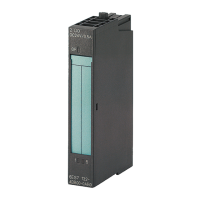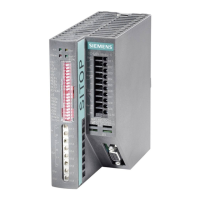Operating mode DI
3.2 Parameters/address space
Digital input module DI 8x24VDC HS (6ES7131‑6BF00‑0DA0)
Manual, 03/2015, A5E35243810-AA
19
Explanation of parameters
Potential group
Specifies whether the a light BaseUnit with incoming voltage supply is located in this slot
(see system manual ET 200SP Distributed I/O System
(http://support.automation.siemens.com/WW/view/en/58649293)).
At the module level, specifies the operating mode in which the module's channels are
operated:
● DI / Oversampling (Page 48)
● Counting (Page 28)
When configuring with HSP0229 for STEP 7 or with a GSD file, the operating mode is
specified by selecting the module name.
Diagnostics: No supply voltage L+
Enabling of the diagnostics for no or insufficient supply voltage L+.
Diagnostics: Short-circuit to ground
Enabling of the diagnostics if a short-circuit of the actuator supply to ground occurs.
Determines whether a channel is enabled or disabled. If a digital input is disabled, the
module ignores its signals.
Pulse stretching is a function used to change a digital input signal. A pulse on a digital input
is stretched to at least the configured length. If the input pulse is already longer than the
configured length, the pulse is not changed. With Pulse stretching, you can reliably detect
very short input signals without having to use a correspondingly short cycle time.
In isochronous mode, the terminal signal is read in at the time T
i
(time for reading the input
data). In some cases, pulses that are shorter than the cycle time (send clock) are not
detected.
If you want to detect short signals isochronously, the Oversampling operating mode is
recommended. Oversampling also provides more precise information about the time at
which a signal occurs.

